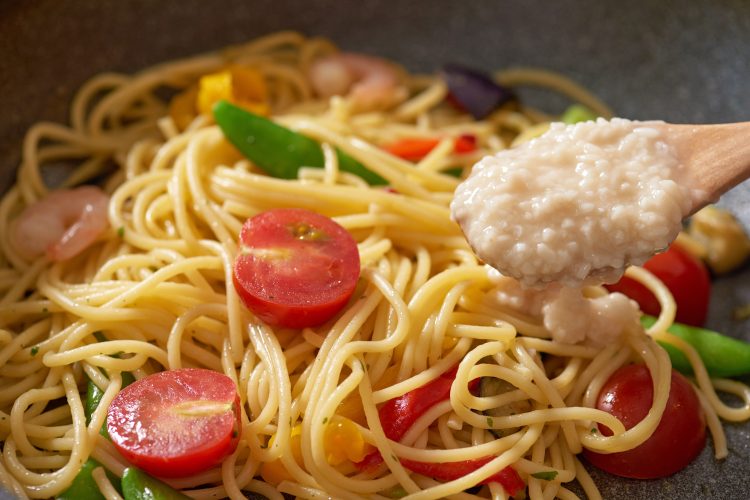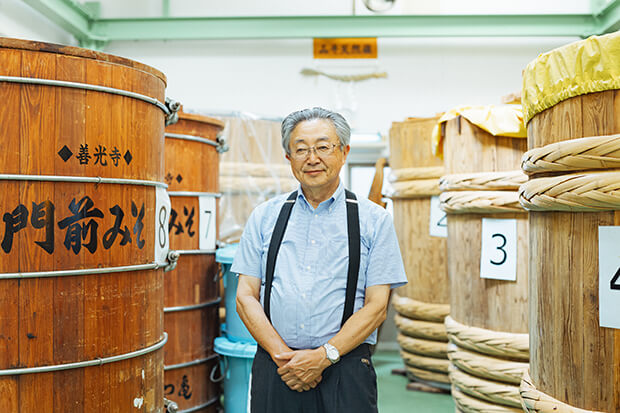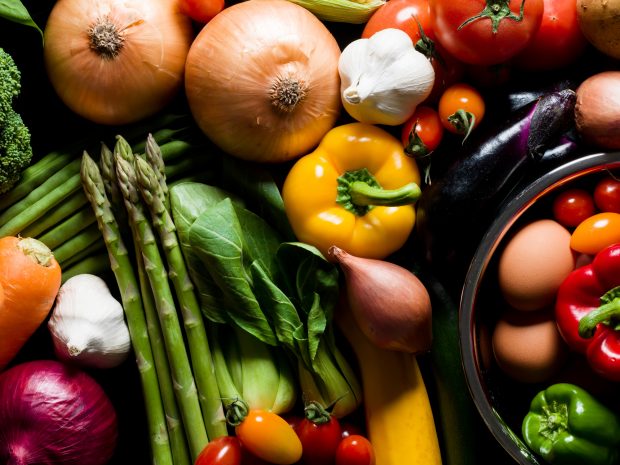Seven Great-tasting Nutrition-packed Pairings with Fermented Foods
Jun 04,2019
A multitude of bacteria live in the gut and keep it in good working order. Recently we’ve come to understand that these intestinal bacteria play a significant role in improving physical well-being. They boost your immune system and ensure your autonomic nervous system functions properly. Making fermented foods part of your regular diet is crucial to maintaining a well-balanced intestinal flora.
Many foods have a synergistic effect when eaten with something fermented. Here food coordinator and registered dietitian Shimizu Kanako shares seven great pairings with fermented foods that are simple to incorporate into your diet.
1. Natto × kimchi
Natto bacillus and lactic acid bacteria make
the perfect combination for a healthy gut!

Natto and kimchi are both foods that every Japanese is familiar with. The natto bacillus in natto and the lactic acid bacteria in kimchi are an unbeatable combination for putting your gut in good working order. Lactic acid bacteria multiply in the gut by feeding on substances metabolized by the natto bacillus, efficiently keeping your intestinal flora in balance.
Heating foods reduces the number of bacteria they contain, so the fact both these foods can be eaten without cooking is a big plus. The bacteria reach the gut alive and well, helping lactic acid bacteria to multiply, which is a sure way to improve your intestinal environment. This combination has other welcome health and beauty benefits as well, including making your skin more attractive and boosting your immune system. Natto and kimchi are easy to make part of your everyday meals. Not only do they taste great on a bowl of rice. They’re also delicious with udon, soba, or the noodles of your choice!
2. Miso × seaweed
The alginic acid in seaweed helps flush out sodium.

Seaweeds like wakame, kelp, sea lettuce, and hijiki abound in alginic acid and minerals. Alginic acid, which is contained in the slimy parts of seaweed, helps flush excess sodium out of the body. Miso and seaweed are such a versatile pairing. You can garnish a seaweed salad with miso dressing, for example, or coat seaweed with miso, not to mention put seaweed in your miso soup. Using dried seaweed is perfectly acceptable as well.
Miso is made from soybeans, which contain plenty of quality protein, and the fermentation process produces lots of amino acids and vitamins. That results in high nutritional value. Miso soup warms you up, plus its sodium content is less of a concern than with a bowl of, say, ramen or udon. So this combination can be heartily recommended, even if you’re worried about your salt intake due to high blood pressure or whatever.
3. Salted koji × pasta
The B vitamins in salted koji promote healthy metabolism of carbohydrates.

Salted koji, made by fermenting rice malt in salt, is an all-purpose seasoning that can be used in a wide range of dishes. This rich source of B vitamins promotes metabolism of carbohydrates and fats. Eating carbohydrates is fattening in the absence of adequate vitamin B1, but when paired with salted koji they’re steadily converted into energy.
Note that B vitamins are vulnerable to heat, so when adding salted koji to pasta, the trick is to wait until as soon as possible before the pasta is cooked and then quicky mix in a tablespoon full.
4. Yogurt × kiwifruit
The combination of protein and vitamin C stimulates collagen production.

Yogurt contains protein and kiwifruit contains vitamin C, both of which are vital to producing collagen. Collagen, a type of protein, forms the building blocks of your skin, nails, and hair. Proper production of collagen improves skin firmness and luster and makes nails less susceptible to splitting.
You don’t have to stick to kiwi. Any fruit rich in vitamin C is perfectly acceptable, such as grapefruit, orange, or other citruses. The fiber contained in the fruit gets your gut in good working order and keeps the lactic acid bacteria in the yogurt active by giving them something to feed on.
5. Vinegar × asari clams
The citric acid in vinegar assists mineral absorption.

The acetic acid in vinegar is converted into citric acid upon entering the body. Citric acid does your body a world of good. It hinders the formation of fatigue-inducing substances and prevents acidification of the blood. When vinegar is paired with shellfish, moreover, it performs the vital task of assisting in the absorption of zinc, iron, and other minerals they contain.
Minerals tend to be lacking in the Japanese diet, and because they’re not easily absorbed by the body, it’s a good idea to ingest them with vinegar. Asari clams are a rich source of minerals, as are shijimi clams, oysters, and seaweeds like wakame. All taste delicious whether simply mixed with vinegar or served with a vinegar dressing.
6. Sake lees × hot chocolate
Reduce cold intolerance by raising your body temperature and keeping warm.

Both sake lees and hot chocolate warm the body by improving circulation, and they’re even more powerful in combination. Sake lees contain degraded peptides, a type of protein that stimulates a rise in body temperature, so they’re recommended if you want to warm up quickly. Hot chocolate contains cacao polyphenols and theobromine, which maintain healthy circulation. This pairing is therefore effective in raising your body temperature and keeping you warm.
Sake lees don’t dissolve easily, so the trick is to add a little hot water to them to form a paste before putting them in your hot chocolate. Note also that hot chocolate made with milk contains a mixture of various compounds, so for best results choose pure cocoa hot chocolate instead, which contains a high concentration of cacao polyphenols.
7. Beer × edamame
A combination that helps metabolize alcohol.

Beer and edamame (boiled green soybeans) are the perfect pairing for summer. Not only are they a simple, great-tasting treat; they’re also the ideal combination for your health. Edamame contain protein as well as vitamins B1 and B2, and vitamin B1 promotes metabolism of the carbohydrates and alcohol in beer.
Edamame are also a rich source of methionine, a type of amino acid. Methionine supports liver functions and helps break down alcohol!
Find the bacteria right for you.
The bacteria you ingest are discharged from the body in about 48 hours. Making fermented foods a regular part of your everyday diet is therefore key to improving your intestinal environment.
Everybody’s intestinal environment is different, as are the types of bacteria that inhabit it. That means that what one should eat to stay in good condition varies from person to person. So try out a wide variety of fermented foods and find the bacteria, and the food, best for you!




































